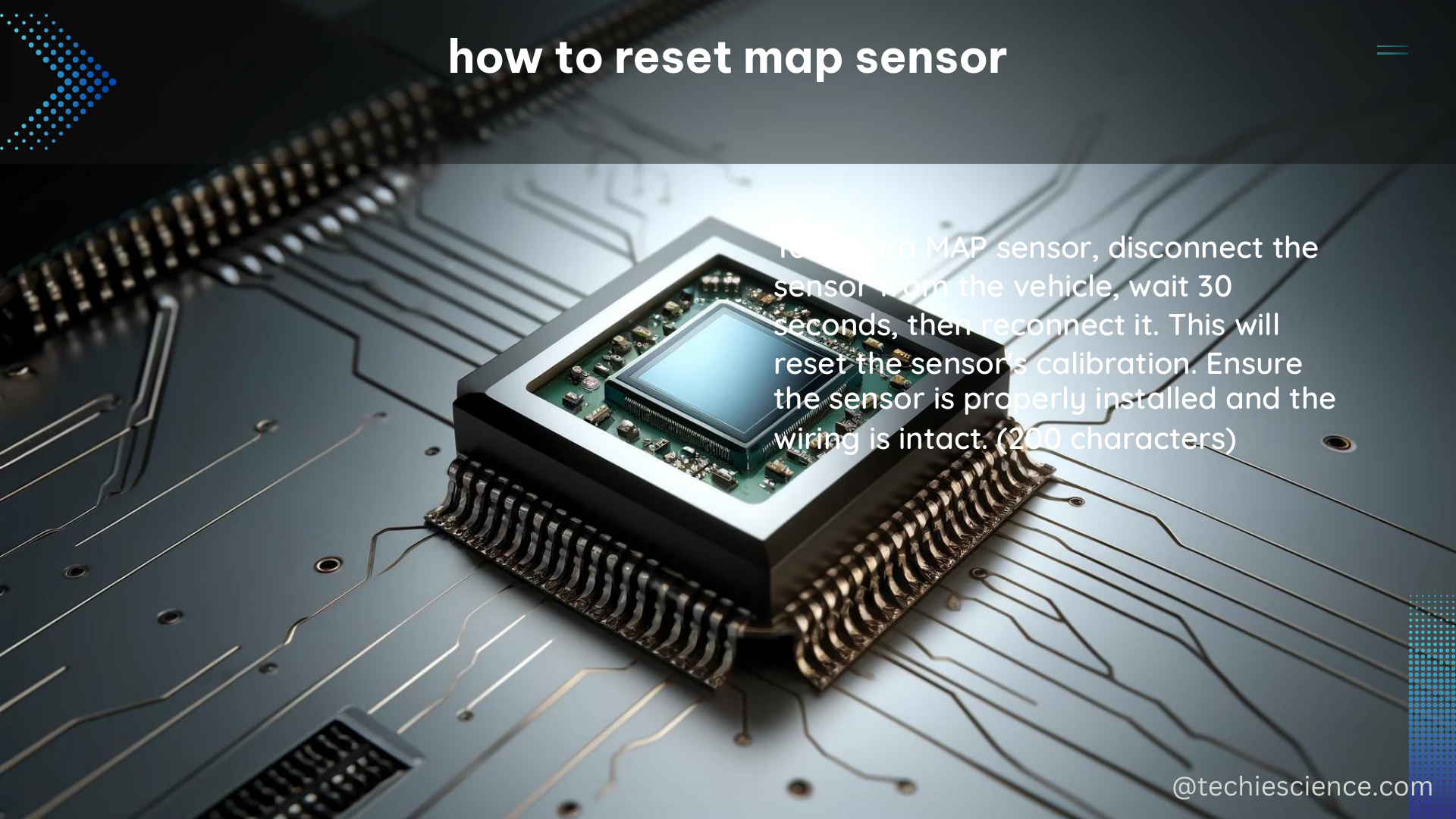Resetting a Manifold Absolute Pressure (MAP) sensor is a crucial step in maintaining the optimal performance of your vehicle’s engine. The MAP sensor is responsible for measuring the pressure in the intake manifold, which is then used by the engine control unit (ECU) to adjust the air-fuel mixture and ignition timing. If the MAP sensor is not functioning correctly, it can lead to various issues, such as poor fuel economy, engine misfiring, and even engine damage. In this comprehensive guide, we will walk you through the step-by-step process of resetting a MAP sensor, along with detailed technical specifications and a DIY troubleshooting checklist.
Disconnecting the Battery
Before working on any electrical component, it is crucial to disconnect the battery to avoid any electrical accidents. Locate the battery, typically in the engine bay or under the front seat, and disconnect the negative terminal. This will ensure that the electrical system is completely isolated, allowing you to safely work on the MAP sensor.
Locating the MAP Sensor

The MAP sensor is usually located near the engine bay, often mounted on the intake manifold or the throttle body. Consult your vehicle’s service manual or owner’s manual to determine the exact location of the MAP sensor. This information is essential, as the sensor’s location may vary depending on the make, model, and year of your vehicle.
Disconnecting the Electrical Connector
Once you have located the MAP sensor, find its electrical connector. This is typically a plug with several wires connected to the sensor. Carefully disconnect the electrical connector by pressing the tab or lever and pulling it out. Be gentle to avoid any damage to the connector or the sensor itself.
Waiting for the Sensor to Reset
After disconnecting the electrical connector, wait for a few minutes to allow the MAP sensor to reset. This time allows the sensor to clear any stored data or errors, preparing it for a fresh start.
Reconnecting the Electrical Connector
After the waiting period, reconnect the electrical connector by pushing it back into place until it clicks. Ensure that the connection is secure and that the wires are not damaged or loose.
Reconnecting the Battery
Finally, reconnect the battery by attaching the negative terminal. Start the vehicle and check if the MAP sensor is working correctly. You can use a multimeter to test the sensor’s output signal and ensure that it is within the expected range.
Technical Specifications of a Typical MAP Sensor
- Pressure Range: The pressure range of a MAP sensor typically varies from 0-100 kPa (0-14.5 psi) for automotive applications.
- Accuracy: The accuracy of a MAP sensor is typically around ±1% of the full-scale range.
- Response Time: The response time of a MAP sensor is usually less than 10 milliseconds (ms).
- Temperature Range: The temperature range for a MAP sensor is typically -40°C to +125°C (-40°F to +257°F).
- Output Signal: The output signal of a MAP sensor is typically an analog voltage or a digital pulse-width modulation (PWM) signal.
DIY Troubleshooting Checklist
To reset a MAP sensor, you’ll need the following tools and equipment:
- Screwdriver: A flathead or Phillips screwdriver, depending on the screws used to secure the sensor.
- Wire Stripper: A wire stripper to remove the insulation from the wires if necessary.
- Multimeter: A multimeter to test the sensor’s output signal.
- Vehicle Service Manual: A vehicle service manual to locate the sensor and understand the specific steps for your vehicle model.
By following this comprehensive guide, you can effectively reset your vehicle’s MAP sensor and ensure optimal engine performance. Remember to always consult your vehicle’s service manual for specific instructions and safety precautions, as the process may vary depending on the make, model, and year of your vehicle.
References:
- Inter-rater Reliability: Definition, Examples, Calculation – Encord
- SmartMesh IP Application Notes – Analog Devices
- Looking Back 2023 – Tanner Hodges
- Cisco DNA Center – AIOps
- Field Procedures Manual – Nautical Charts

The lambdageeks.com Core SME Team is a group of experienced subject matter experts from diverse scientific and technical fields including Physics, Chemistry, Technology,Electronics & Electrical Engineering, Automotive, Mechanical Engineering. Our team collaborates to create high-quality, well-researched articles on a wide range of science and technology topics for the lambdageeks.com website.
All Our Senior SME are having more than 7 Years of experience in the respective fields . They are either Working Industry Professionals or assocaited With different Universities. Refer Our Authors Page to get to know About our Core SMEs.